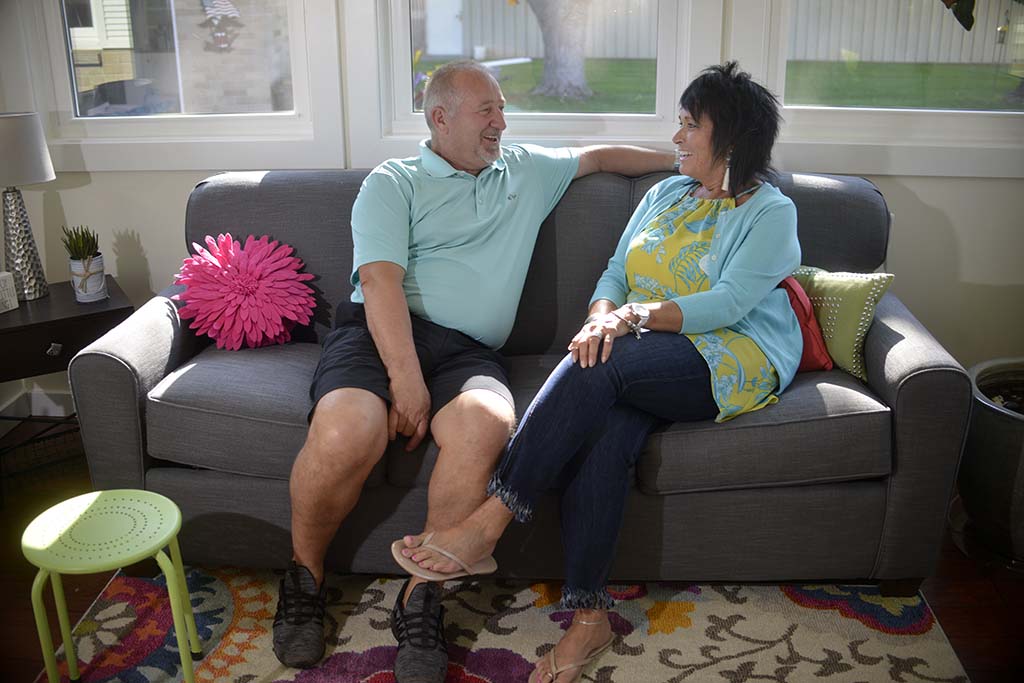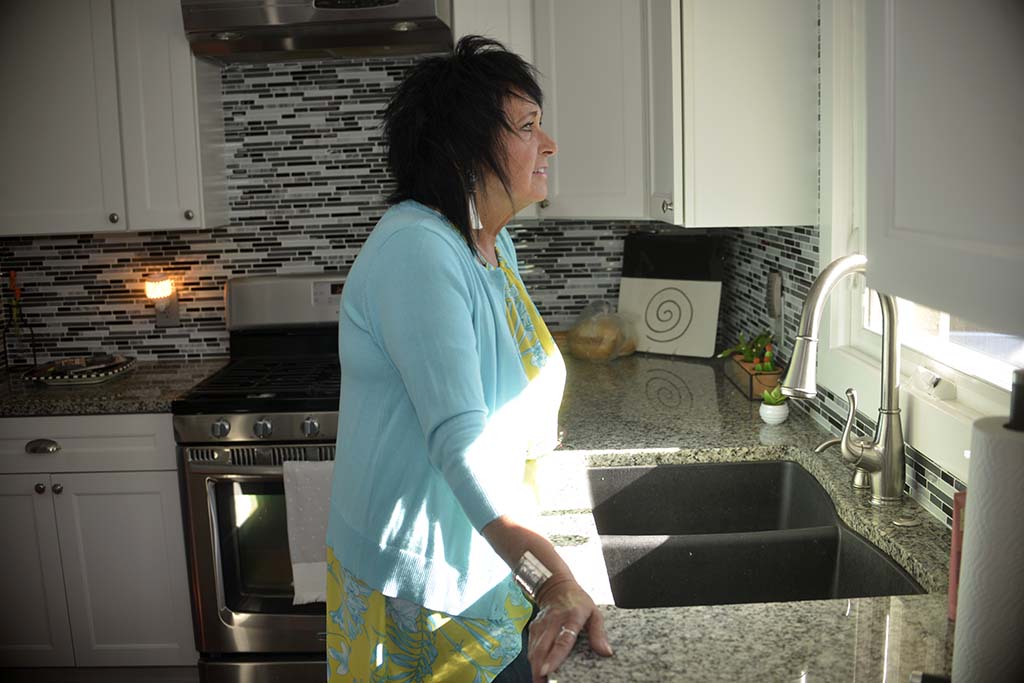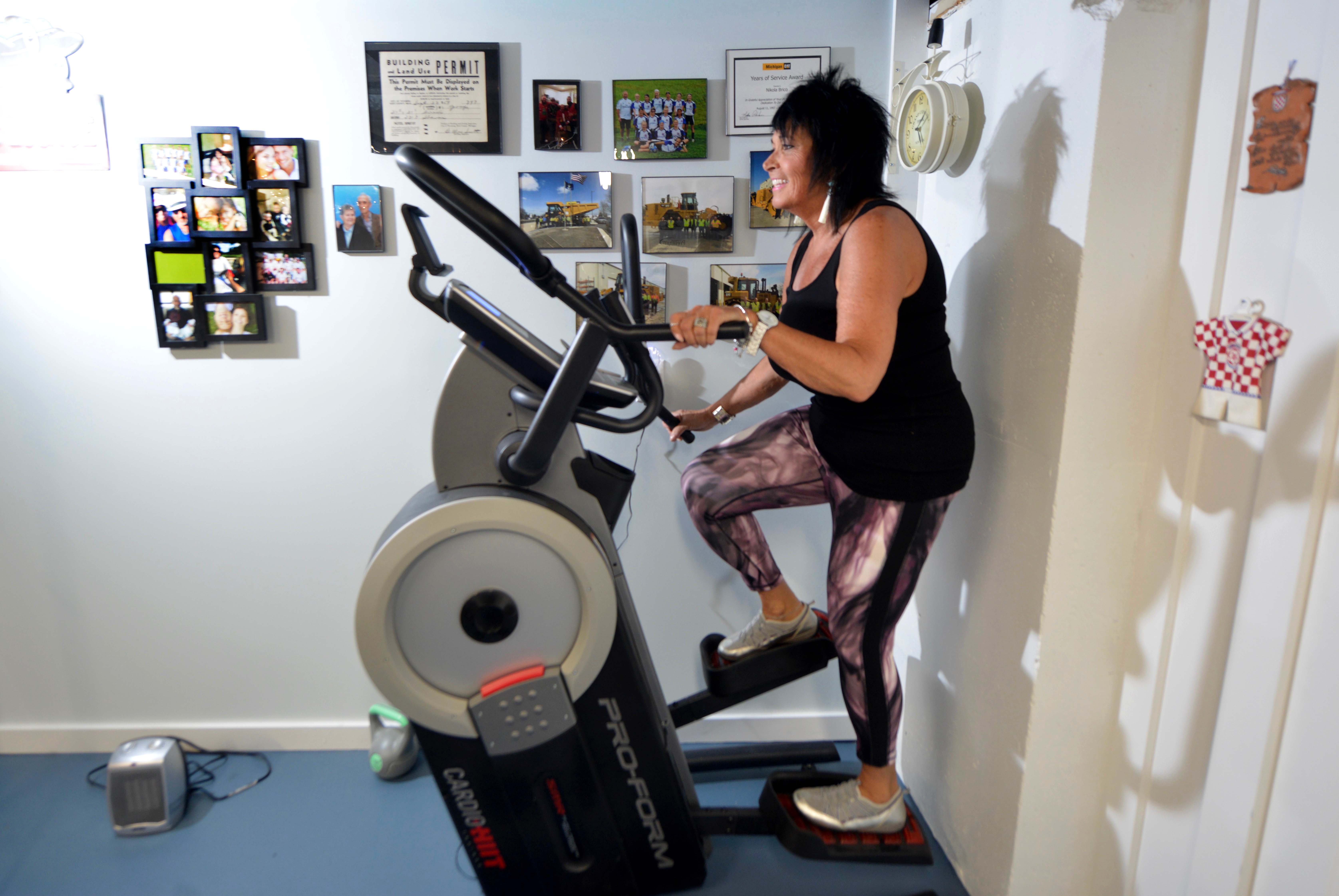Elvira Brico, 62, wasn’t ready to slow down.
She had practically become a newlywed, remarried in 2016, and now had a blended family of three children and four grandchildren.
The Wyoming, Michigan, resident still worked full-time at a sales and marketing firm.
And she loved to shop.
On one such shopping expedition with her mother, who is in her 80s, Brico had to stop and rest on a bench. She nursed the pain in her hip as she watched her mother go on.
“I thought to myself, ‘I’m too young to sit around,’” she said.
She met with her primary care physician, who referred her to orthopedic specialist Charles Sherry, DO, section chief for adult joint reconstruction at Spectrum Health Medical Group Orthopedics.
Brico learned her hip joint had worn down to bone on bone and she had developed arthritis.
“Dr. Sherry answered all of my questions,” Brico said.
In August 2016, she had a cortisone shot to alleviate the pain, but the relief lasted only a short while.
So in November 2016, she underwent surgery to replace her left hip, also known as total hip arthroplasty.
“I have had zero pain in that hip since,” she said. “Total mobility. Just amazing.”
First one, then the other
When pain started up in her right hip, Brico recognized the symptoms. She knew what would come next.
“I didn’t wait as long with this one because I knew I had arthritis—and the pain quickly became unbearable,” Brico said.
In December 2018, Brico underwent right total hip arthroplasty.
“In total hip replacement surgery, we resurface the arthritic or damaged joint with a prosthesis made out of metal, plastic, or ceramic,” Dr. Sherry said. “The prosthesis is designed to move like a normal, healthy joint. And they should last more than 20 years.”
Joint replacement, whether knee or hip, is a common, safe medical procedure, Dr. Sherry said.
“Most of our patients don’t experience any complications at all and are up and walking soon after surgery,” he said.
Patients are in the hospital usually one to three days, depending on individual recovery. They work with a physical therapist after surgery.
“I went home from the hospital next day after surgery and I had a physical therapist come to my home three times a week for two weeks,” Brico said. “I had six sessions total. Each day, several times a day, I do exercises the therapist has taught me, such as moving my leg from side to side and leg lifts.”
“People should be able to resume normal activity within three to six weeks after surgery,” Dr. Sherry said.
Initially, Brico did the leg exercises in bed. But soon enough she found herself moving about the house, increasing her mobility.
She then discovered an added benefit to her surgery.
“I used to have back problems,” she said. “That’s gone. Seems it had something to do with my bad hips.”
Brico bought an elliptical machine to celebrate her newfound mobility. She now uses it daily.
Staying active, she knows, is crucial to her recovery.
“If you’re living with pain, you are not living the life you are meant to live,” she said. “Life can be so much better.”










 /a>
/a>
 /a>
/a>
 /a>
/a>